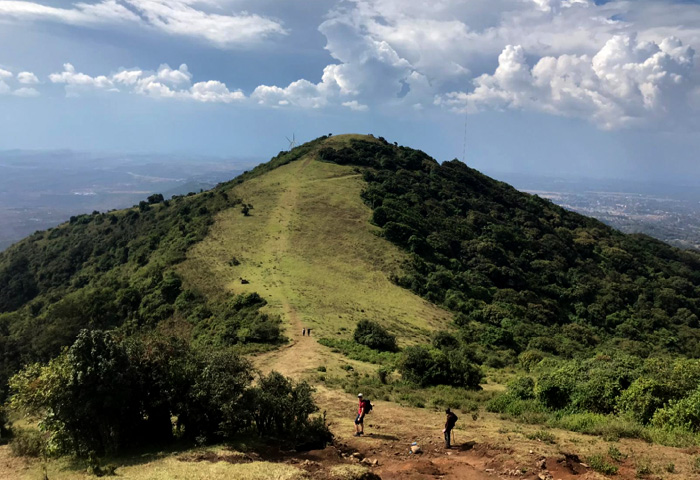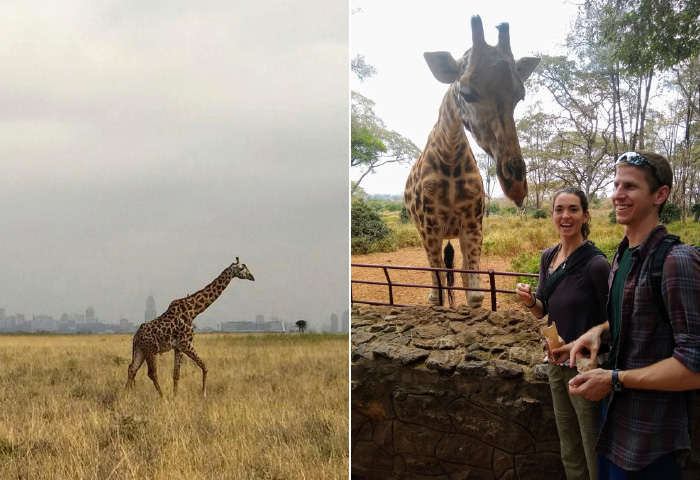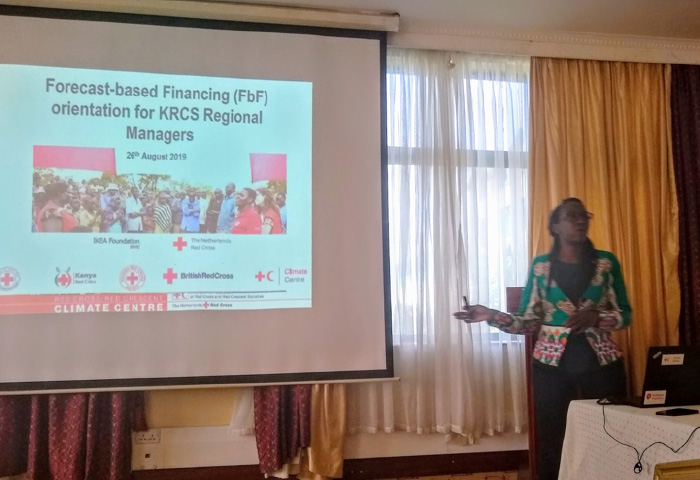 |
 |
 |
 |
notes from the field
This is a personal blog and does not reflect the views of the Red Cross Red Crescent Climate Centre
Sarah Posner
Kenya
June - September, 2019
Forecasts for Action: Trigger Development of FbF Project
September 2019
View photo gallery for more photos in the field by Sarah Posner
Greetings from Nairobi! Oh how the time continues to fly. Today is September 1st, which marks the more-than-halfway point of my time here at Kenya Red Cross Society (KRCS). My partner has come to visit, and I couldn’t be happier to show him around. Yesterday, we climbed the Ngong hills, which are called “knuckle hills” by the Maasai attributed to their shape which protrude from the Rift valley. We managed to climb all seven of the hills, and we were left with a nasty sunburn in the process. We also checked out the other sites the city has to offer, including the giraffe center, elephant orphanage, and even did a safari in Nairobi national park, which I found out is the only park located within a city in the entire world! Overall, it was fun to be a tourist again as well as share my experiences with someone from home.

The first of seven hills taken at Ngong hills.
Last week, I attended a series of trainings on the inner workings of Cash Transfers, Data Preparedness, and of course, Forecast based Financing (FbF) as part of an orientation for the regional managers of the KRCS. It was an opportunity to receive additional input from the regional managers across Kenya who, I might add, are difficult to get in one room. The first day was allocated for FbF which was presented along with the impact prioritization. FbF marks a turning point in humanitarian intervention in which action is taken before a disaster occurs rather than after disaster strikes so as to mitigate and hopefully reduce human pain and suffering in the process. Another benefit of an anticipatory rather than responsive approach is that the costs of intervention are significantly reduced. Examples of early actions include destocking, vaccination, and de-worming of livestock before a drought occurs rather than re-stocking livestock after the disaster occurs, which is much more costly.
But how do we know when to engage in early action? That is where I have come in, through this CU Boulder CSTPR Fellowship with the Red Cross Red Crescent Climate Center. With the engagement of trigger development, I help inform when and where to activate early action based upon when a forecast exceeds a pre-determined probability and magnitude, based upon a historical analysis of prior drought events, because the best way to predict the future is to look into the past.

Left photo: Nairobi National Park. Right photo: Feeding Giraffes at Giraffe Centre.
This is why impact prioritization is essential because before any analysis can be undertaken, the data team must have a firm grasp of which impacts are, well, most impactful based upon whether they are both actionable as well as forecastable. The major breakthrough in our research thus far has been the disaggregation of both primary and secondary impacts for drought in which primary are those biophysical indicators that first appear on the landscape, while secondary are the anthropogenic indirect impacts felt on longer time scales depending on the severity of the drought. The approach is innovative in that primary impacts are forecastable while secondary impacts are actionable.

Maurine Ambani Presenting Forecast based Financing at the orientation for regional managers.
When my manager Maurine presented the three primary impacts prioritized by key stakeholders during the Technical Working Group meeting (TWG) to the regional managers at the training, there was unanimous agreement that crop failure, livestock death, and water scarcity are the most important impacts related to drought, which are all primary. With this information in hand, I have begun my analysis of the historical impacts of these primary impacts using satellite observations to set thresholds based upon previous drought years in Kenya, which include 2000, 2011, and 2016/2017. Then, secondary impacts, such as malnutrition, livestock death, and resource-based conflict, can be taken action against based upon the thresholds to prevent the worst manifestation of these impacts, thus avoiding human suffering while preserving individual and household’s livelihoods.
I am very much looking forward to conducting the rest of this analysis and helping to develop the very first FbF for drought, which has never been done before. Considering that Kenya is already heading into another major drought, this work is very important.

